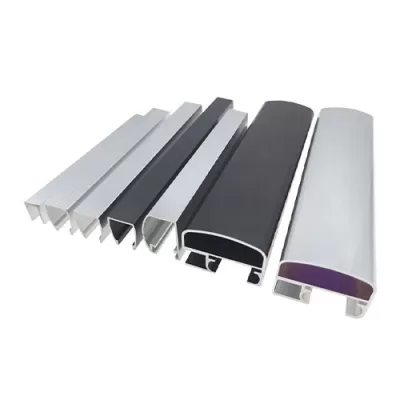Aluminum extrusion profiles are widely used in various industries due to their versatility, durability, and lightweight nature. These profiles are created by pushing heated aluminum through a die to create the desired shape, making them ideal for a wide range of applications. As technology advances and industries evolve, new trends are emerging in the use of aluminum extrusion profiles, expanding their potential applications and pushing the boundaries of design and functionality.
Lightweight Construction
One of the emerging trends in aluminum extrusion profile applications is lightweight construction. As the demand for sustainable and energy-efficient buildings grows, architects and designers are turning to lightweight materials like aluminum to reduce the overall weight of structures. Aluminum extrusion profiles offer a high strength-to-weight ratio, making them an ideal choice for applications where weight reduction is critical, such as in aerospace, automotive, and transportation industries.
Sustainable Design
Sustainability is a key focus in modern design, and aluminum extrusion profiles are playing a crucial role in sustainable design practices. Aluminum is a highly recyclable material, with nearly 75% of all aluminum ever produced still in use today. By using aluminum extrusion profiles, designers can create environmentally friendly products and structures that are both durable and recyclable. Additionally, the lightweight nature of aluminum reduces fuel consumption and carbon emissions in transportation applications.
Energy Efficiency
Energy efficiency is another key trend driving the use of aluminum extrusion profiles. The thermal conductivity of aluminum allows for the creation of energy-efficient building envelopes and window systems that help reduce heating and cooling costs. In addition, aluminum extrusion profiles can be used to create solar panel frames, further enhancing the energy efficiency of buildings by harnessing renewable energy sources.
Customization and Design Flexibility
Advancements in extrusion technology have made it easier to create complex and intricate designs with aluminum extrusion profiles. Designers can now create custom profiles with unique shapes and features to meet specific project requirements. This customization allows for greater design flexibility and creativity, opening up new possibilities in architecture, interior design, and product development.
Integration of Technology
Aluminum extrusion profiles are increasingly being used to integrate technology into products and structures. For example, aluminum profiles can be used to create smart building systems that monitor and control energy usage, lighting, and security. Additionally, aluminum profiles can be used to create innovative product designs that incorporate sensors, actuators, and other electronic components.
Hybrid Materials
Another emerging trend is the use of hybrid materials in conjunction with aluminum extrusion profiles. By combining aluminum with other materials such as wood, plastic, or composites, designers can create products with enhanced performance characteristics. For example, aluminum-wood composite profiles offer the aesthetic appeal of wood with the durability and low maintenance of aluminum.
Conclusion
There are wide types of aluminum extrusion profiles, they are versatile, durable, and lightweight, making them an ideal choice for a wide range of applications. As technology advances and industries evolve, new trends are emerging in the use of aluminum extrusion profiles, expanding their potential applications and pushing the boundaries of design and functionality. From lightweight construction and sustainable design to energy efficiency and integration of technology, aluminum extrusion profiles are at the forefront of modern design and innovation.
